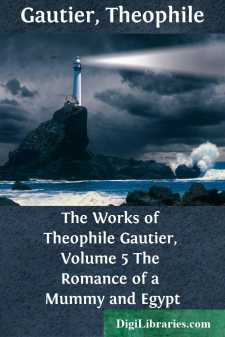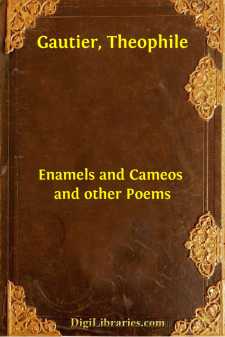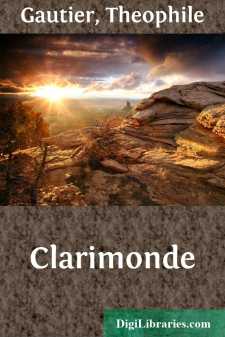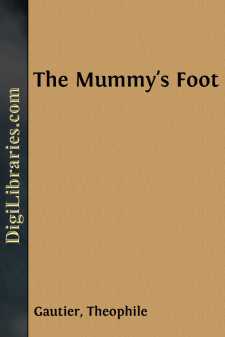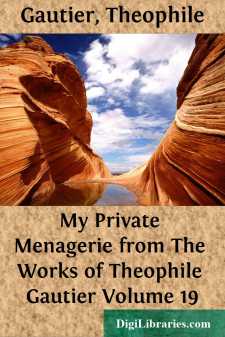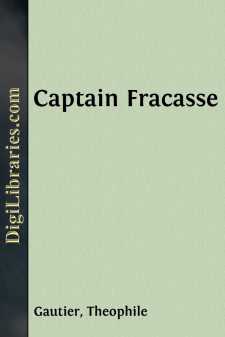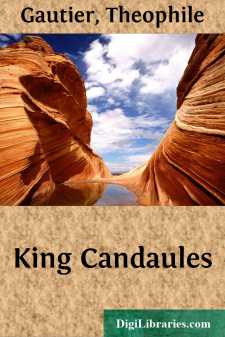Categories
- Antiques & Collectibles 13
- Architecture 36
- Art 48
- Bibles 22
- Biography & Autobiography 813
- Body, Mind & Spirit 142
- Business & Economics 28
- Children's Books 17
- Children's Fiction 14
- Computers 4
- Cooking 94
- Crafts & Hobbies 4
- Drama 346
- Education 46
- Family & Relationships 57
- Fiction 11829
- Games 19
- Gardening 17
- Health & Fitness 34
- History 1377
- House & Home 1
- Humor 147
- Juvenile Fiction 1873
- Juvenile Nonfiction 202
- Language Arts & Disciplines 88
- Law 16
- Literary Collections 686
- Literary Criticism 179
- Mathematics 13
- Medical 41
- Music 40
- Nature 179
- Non-Classifiable 1768
- Performing Arts 7
- Periodicals 1453
- Philosophy 64
- Photography 2
- Poetry 896
- Political Science 203
- Psychology 42
- Reference 154
- Religion 513
- Science 126
- Self-Help 84
- Social Science 81
- Sports & Recreation 34
- Study Aids 3
- Technology & Engineering 59
- Transportation 23
- Travel 463
- True Crime 29
The Works of Theophile Gautier, Volume 5 The Romance of a Mummy and Egypt
Description:
Excerpt
Introduction
The subject of "The Romance of a Mummy" was possibly suggested to Théophile Gautier by Ernest Feydeau, the author of "Fanny" and other works of purely light literature, who published in 1858 a "General History of Funeral Customs and Burials among the Ancients." This book was reviewed by Gautier when it appeared, and it is most likely that he had been previously made acquainted with its contents and had discussed Egyptian funeral rites and modes of sepulture with the author, for it was to Feydeau that he dedicated his novel when it was published in book form by Hachette in 1858. An omnivorous reader, Gautier had no doubt also perused the far more important works of Champollion, the decipherer of the inscriptions on the Rosetta stone, who first gave the learned world the key to the mysterious Egyptian hieroglyphic alphabet. Champollion's "Monuments of Egypt and Nubia" had appeared in four volumes from 1835 to 1845, and a continuation by himself and the Vicomte Emmanuel de Rougé was completed in 1872. Champollion-Figeac's "Ancient Egypt" had been published in 1840, having been preceded by Lenormant's "The Museum of Egyptian Antiquities in the Louvre," in 1830, and followed by Prisse d'Avennes' "Monuments of Egypt" in 1847. The explorations and discoveries of Mariette, summed up in that writer's "Selected Monuments and Drawings," issued in 1856, and the steady growth of the Egyptian Museum in the Louvre, to which was added in 1852 the magnificent Clot-Bey collection, must have attracted the attention of Gautier, always keenly interested in art, literature, and erudition.
The account he gives, in his novel, of the ancient city of Thebes, of the great necropolis in the valley of Biban el Molûk, of the subterranean tombs, of the precautions taken by the designers to baffle curiosity, of the form and ornamentation of the sarcophagi, of the mummy-cases, of the mummy itself, of the manners, customs, dress, and beliefs of the ancient Egyptians, are marvellously accurate. Nothing is easier than to verify his descriptions by reference to the works of Champollion, Mariette, Wilkinson, Rawlinson, Erman, Edwards, and Maspero. Scarcely here and there will the reader find a possible error in his statements. It is evident that he has not trusted alone to what Feydeau told him, or to what he read in his book or in the works of Egyptologists; he examined the antiquities in the Louvre for himself; he noted carefully the scenes depicted on monuments and sarcophagi; he traced the ornamentation in all its details; he studied the poses, the attitudes, the expressions; he marked the costumes, the accessories; in a word, he mastered his subject, and then only did he, with that facility and certainty that amazed Balzac, write in swift succession the chapters of the novel which appeared in the numbers of the "Moniteur Universel" from March 11 to May 6, 1857.
His remark on Feydeau's book, "Picturesqueness in no wise detracts from accuracy," might well be applied to his own "Romance," which fascinates the reader with its evocation of a long vanished past and its representation of a civilisation buried for centuries in mystery....


